Furano: A Chef and Maître d'hôtel Part2 - Autumn and Winter
Chef Otsuka Kenichi and his wife Keiko relocated from Tokyo to Hokkaido Prefecture six years ago. They now work with locals to source delicious ingredients even in the harshness of the northern winter.
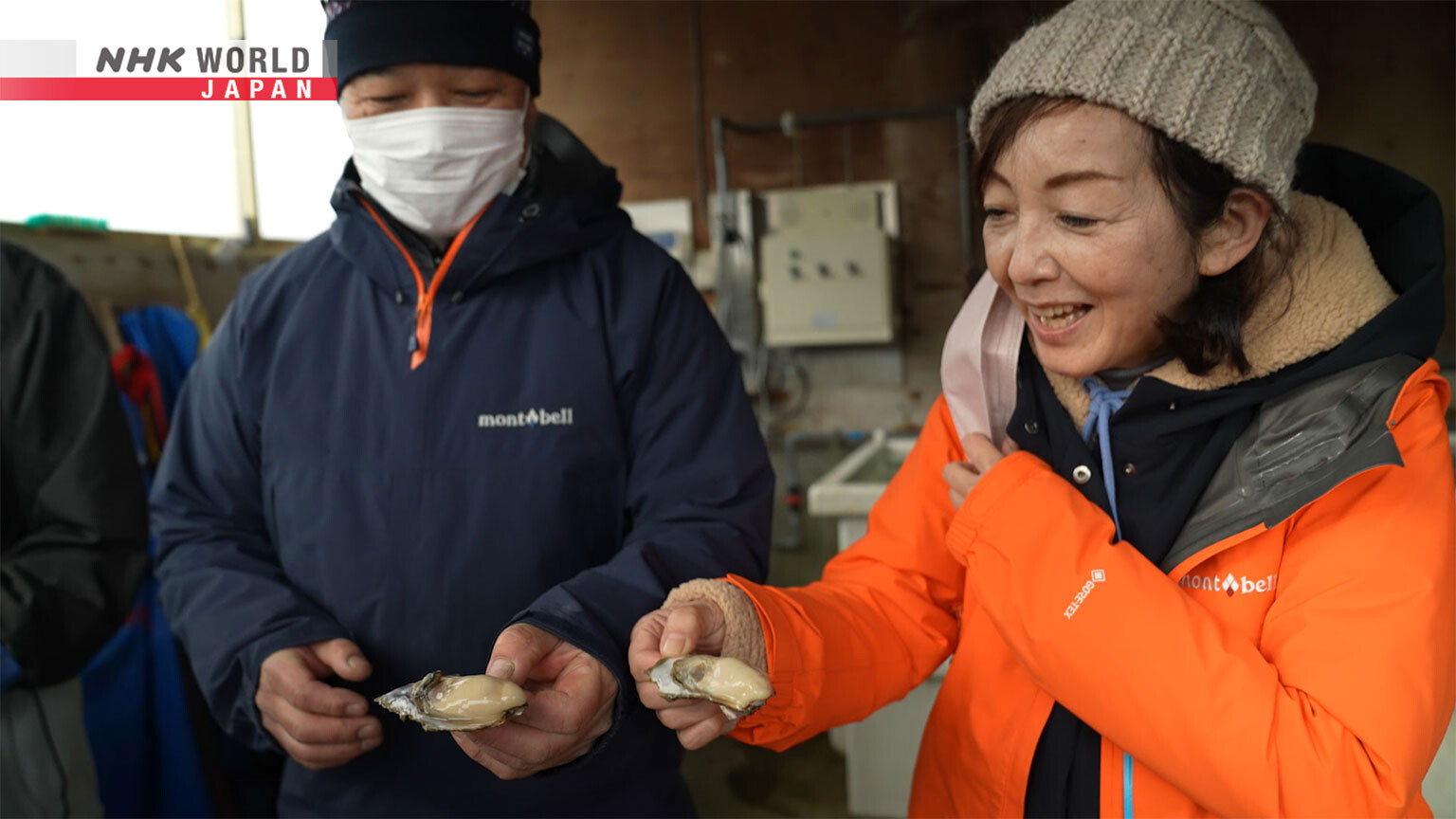
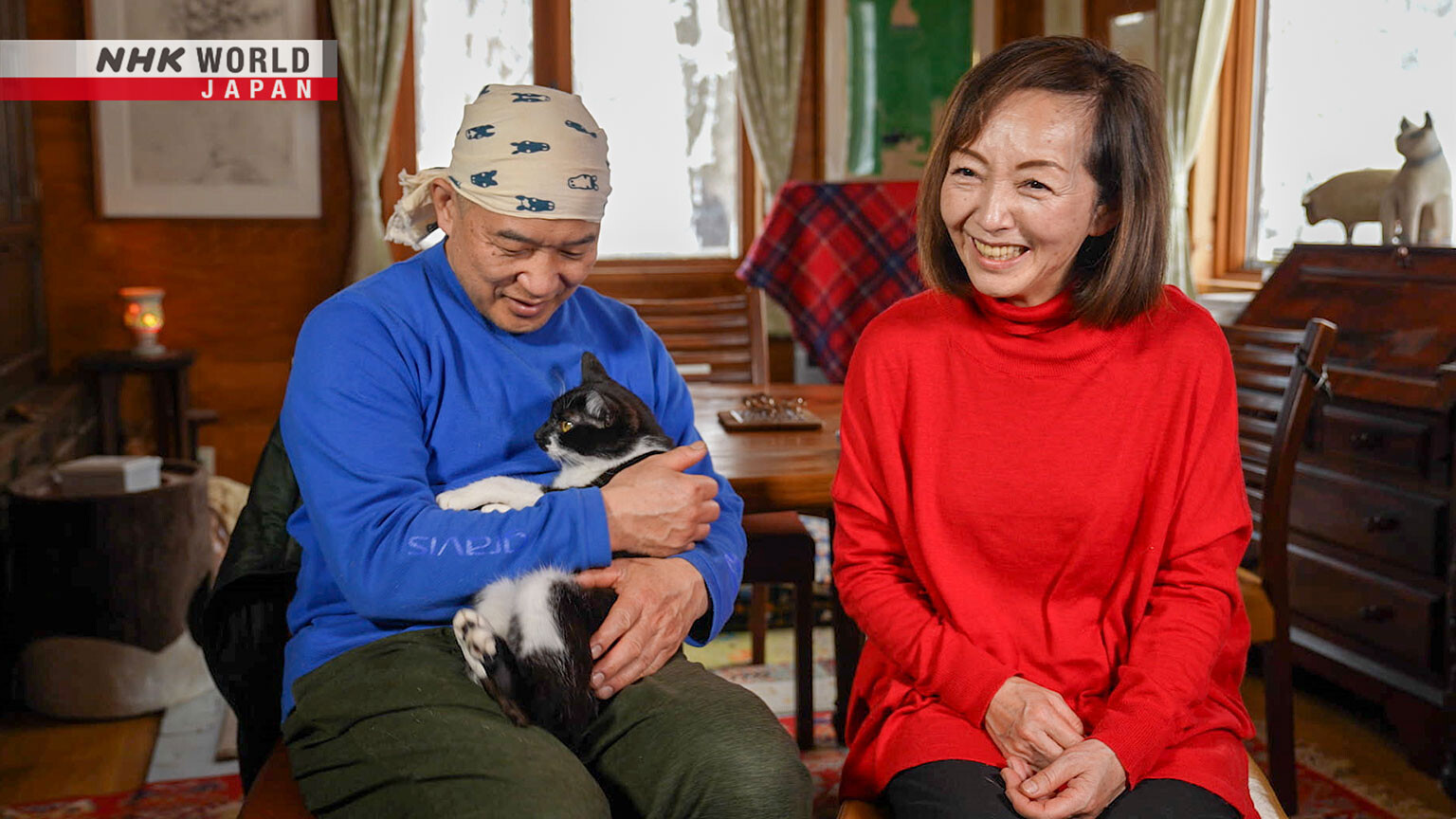
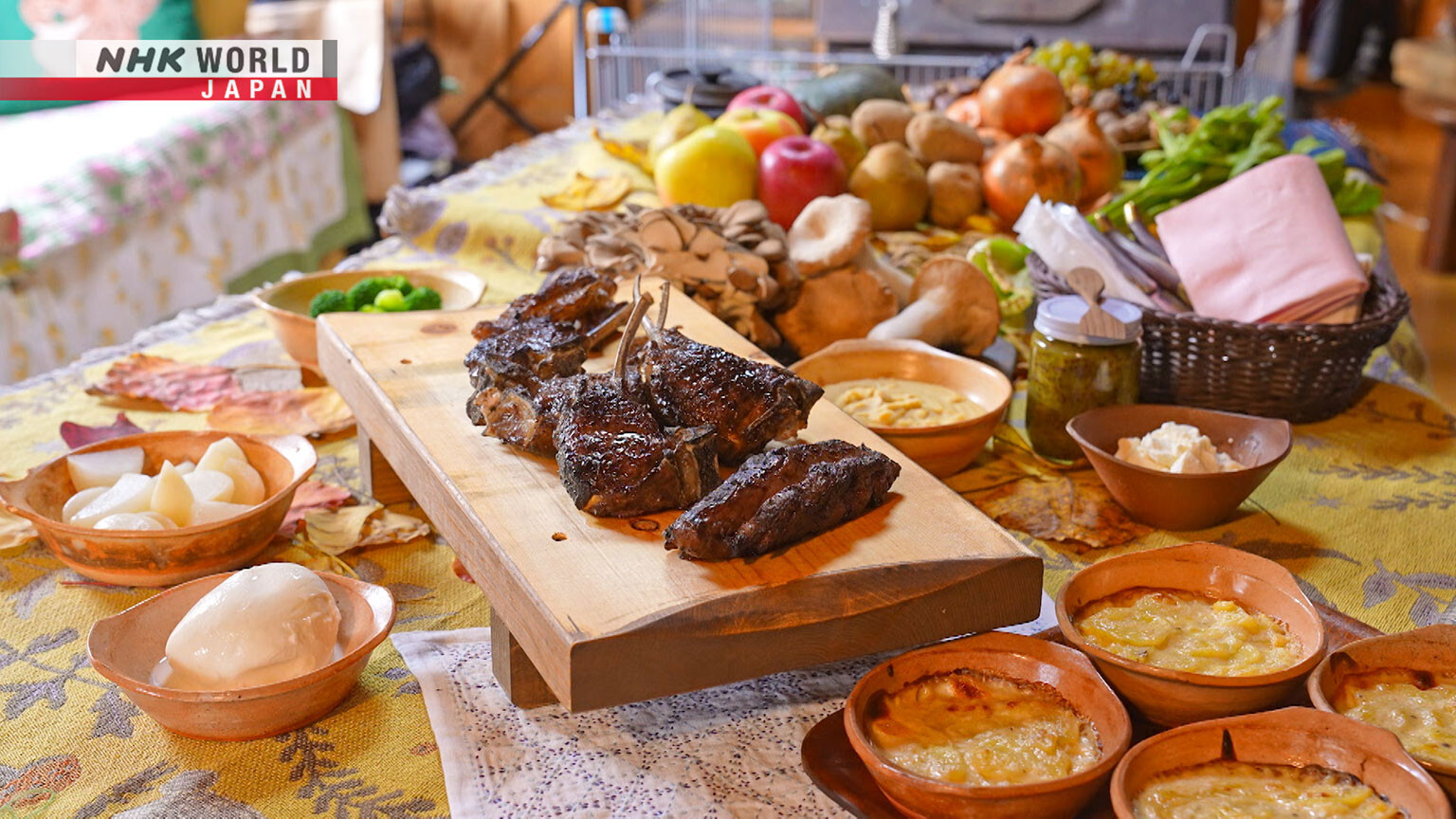
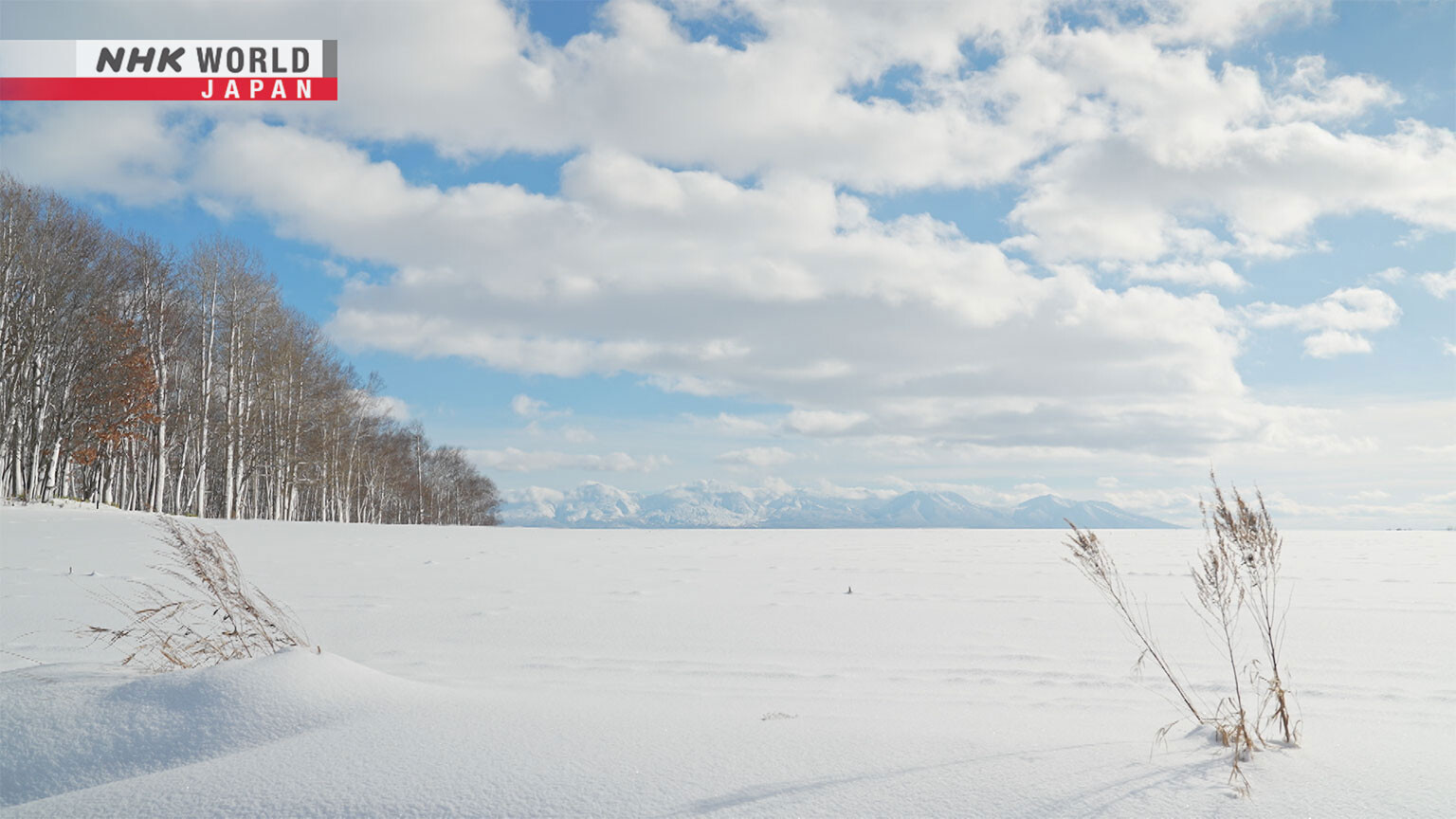
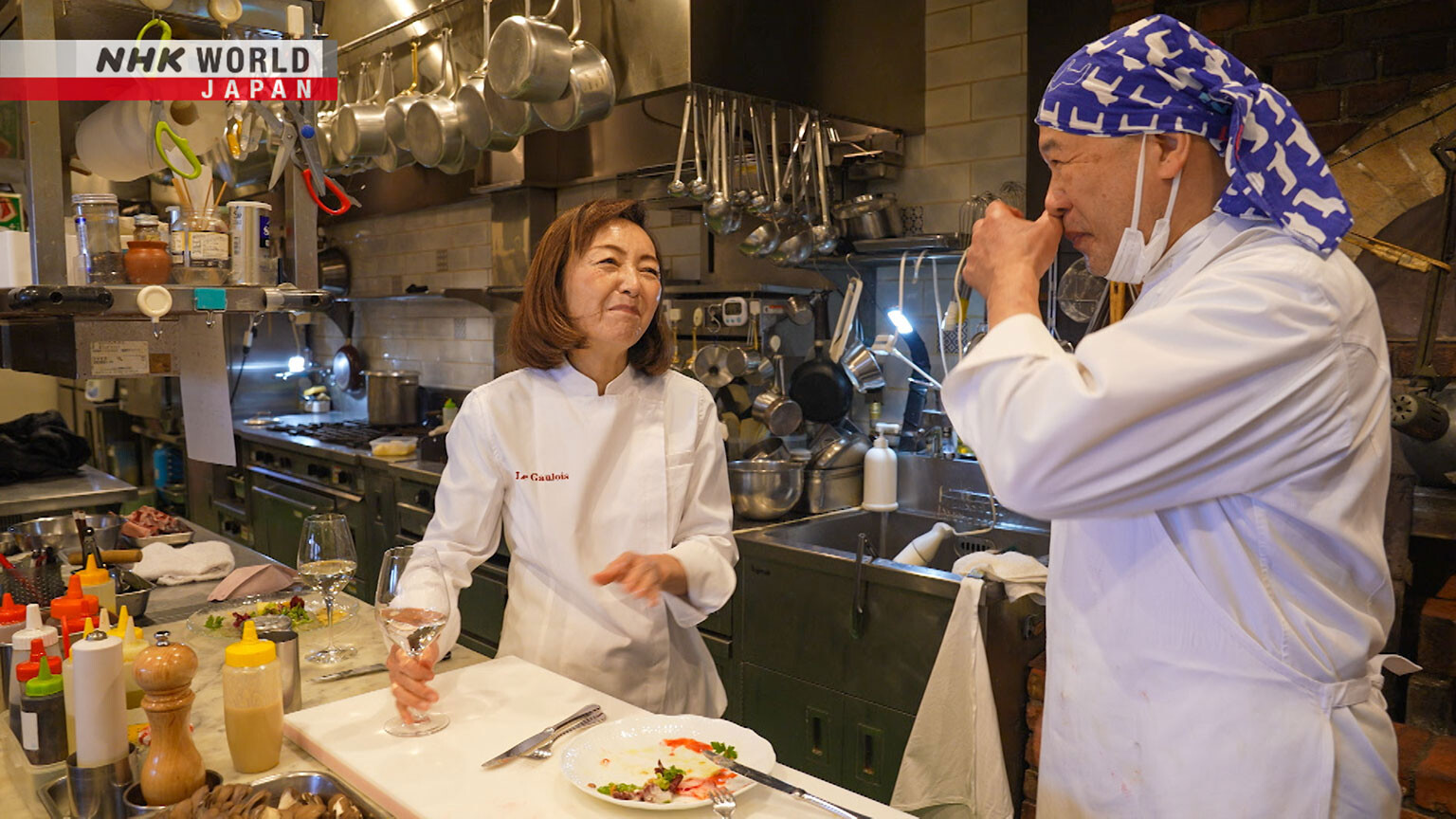
Transcript
A small restaurant, deep in the forest.
For 20 years, Ohtsuka was owner-chef of a famous French restaurant in Tokyo.
In 2016, the Ohtsukas closed their restaurant and moved to Hokkaido.
A restaurant close to farms has better access to good ingredients.
That means better food for our guests.
Ohtsuka exclusively uses ingredients from Hokkaido.
In spring, asparagus rich in earthy minerals.
In summer, vegetable soup packed with energy from the sun.
In every season, there are dishes exclusive to that time and place.
So what food do the Ostukas offer in autumn and winter?
A party was held to celebrate 50 years of wine production in Furano.
Serve the soup, and take it out. The appetizers are the same as usual.
The main dish is Furano's Wagyu beef.
This is my first time using Wagyu from Furano.
Grilling over a wood fire melts the fat. It's delicious.
Furano wine production began in 1972, making use of the mountain slopes.
It has since become one of Japan's top wines.
It was so tasty. I feel moved.
- The Rokugo strawberries.
- They were amazing. Thank you.
The meat was so tender, too.
- Ah, the Furano Wagyu beef.
- It was from Furano? Wow.
The highest peak in Hokkaido gets Japan's earliest autumn leaves.
By mid-September, the mountain is dyed bright red by the changing leaves.
In autumn, Furano's mountains are a treasure trove of ingredients.
- We're going up the mountain road.
- OK.
The group search for autumnal flavors found only in the mountains.
- Hoo hoo hoo!
- Are they out there?
- They're out there.
- They are.
A large animal definitely came through here.
Wow. Makes sense.
- And you can't see hoofprints.
- It was a bear.
- Yes. Probably.
- I see.
Calling out while walking helps to ward off bears.
- Over there.
- Ah, we found some.
I wonder if they'll produce juice.
They're infected with noble rot.
- They're not sweet.
- No, they're sour.
But the aroma is good.
What will you do with them?
Extract the juice, to be used in a sauce for Yezo sika venison.
Cooking them down might bring out the flavor.
- Ah, here too.
- Yes.
The branches down here are covered.
- They're already ripe.
- Why don't you try one?
Ah, it's delicious.
So sweet.
Yeah. Like a kiwi fruit.
What will this be used for?
Jam. We'll make jam.
I want to eat it at home, not just serve it at the restaurant.
The Ohtsukas live in the mountains, a 40-minute drive from the restaurant.
They rented it from a scriptwriter, and restored it themselves.
Say hello to our newest arrival.
The Ohtsukas look after five rescue cats.
And two old horses that would otherwise have been put down.
Good morning.
For the first time in a while, they're having friends over for dinner.
There's the neck, the loins, and the back, along the backbone.
It's firm to the touch. The fat is slightly dry and condensed.
The meat came from a friend, the master hunter Matsuno Minoru.
He manages the deer population, and provides tender, odorless meat.
At the restaurant, Kenichi only uses venison from Matsuno.
Rei, it's dangerous.
Rei's looking for fallen scraps.
You'll get stomach pain again.
Go inside.
For the sauce, Kenichi cooks down the crimson glory grapes from earlier.
He also adds hascap berries, grown in Hokkaido.
- Hello!
- Hi, it's been a while.
- Hello Rei.
- Welcome.
- I brought a little something.
- Thank you.
The Oyamas are old friends that often look after the Ohtsukas' animals.
Don't overcook Yezo sika venison. Medium-rare is best.
- Sorry to keep you waiting.
- They're huge!
Venison!
- Here's some fat. Your favourite.
- Oh no, I'm going to eat too much!
- They have such a distinctive color.
- And they're so large.
- Thanks for all the food.
- It's so nice to see you.
Cheers!
How's the sweetness?
- It's refreshing and drinkable.
- Delicious.
Eat up.
Time to tuck in.
- Compliments to the chef!
- It's amazing.
- Thanks for the delicious food.
- It's so tender.
- It's perfectly cooked.
- Really?
Will you try this too?
Jam made using monkey pears from the mountains is served with ricotta.
The ricotta comes from Inokuchi-san.
And this is mozzarella.
Ah, mozzarella is so good.
- Inokuchi-san's cheese is special.
- It's something else.
The cheese was made by another old friend, Inokuchi Kazuyoshi.
His cheap, high-quality products help establish cheese culture in Japan.
- Why is his cheese special?
- It has heart.
He makes each one by hand.
I watched him do it, and the level of concentration is incredible.
He's so motivated.
The Oyamas held their wedding ceremony at the Ohtsukas' restaurant.
Before we got together, we visited your restaurant.
And you really helped us out!
You set the scene for us.
The lights were dimmed, too.
You were so slow to get together! I wondered what was taking so long.
It was different for you, wasn't it? No hesitation.
The Ohtsukas met when working at a Karuizawa hotel kitchen.
At the time, Keiko was an apprentice pastry chef.
They married a year after they met.
In 1997, they opened their own restaurant in Tokyo.
They gained a reputation for making French food with Hokkaido ingredients.
But in 2016 they suddenly decided to move to Hokkaido.
They opened a restaurant close to the producers of fresh ingredients.
Farmers show dedication and gratitude for the blessings of nature.
I want to do the same, and pass that on to my customers.
I just add a few tweaks.
Here's someone that supports the Ohtsukas' approach.
You're getting older, aren't you?
Kuramoto was a regular visitor to the Tokyo restaurant.
He's a leading scriptwriter that wrote a hit drama set in Furano.
Let's say you eat something delicious at a restaurant.
You'll praise the chef.
But you don't praise the farmers. They don't get any thanks.
But they contributed the most.
We should be giving farmers more praise and respect.
On a day off, the Ohtsukas go for a drive.
- There are some cranes up there.
- Ah, you're right.
- Good morning.
- Good morning.
- Do you have shishamo?
- Yes, we do.
Oh, you already caught some? OK.
- These are shishamo.
- Ah, there they are.
- Each crate's worth ¥70,000.
- ¥70,000!
1, 2, 3, 4, 5... that's ¥350,000!
Shishamo are endemic to Japan.
They can only be caught in Hokkaido during a certain period of autumn.
I tried some last year, at a Hokkaido sushi restaurant.
Lots of customers were coming just to try it.
Kenichi wants to serve this precious fish in the restaurant.
You expose them to the air, and the fish overlap like this.
That makes the overlapping parts change color.
Shishamo are easily damaged. They're rarely found elsewhere in Japan.
- They're a fleeting pleasure.
- Here today, gone tomorrow.
But they taste great. There's a clarity to it.
We like serving food that can be found nowhere else.
Kenichi seasons the fish with salt and pepper.
He coats them in flour and a batter of egg and butter, then deep-fries them.
I double fry them.
That makes the bones soft and edible.
The fish will be garnished with maitake mushrooms, sauteed in butter.
When the temperature drops sharply, steam rises like mist in the morning.
- What's he doing?
- He wants something to eat.
- Shall I let them out?
- Welcome home, Lucas.
These two horses have spent half a year being treated for an illness.
An infection left his legs swollen, making it difficult for him to walk.
Akari is the first horse that Keiko began taking care of.
A serious foot disease raised the prospect of her being put down.
This controls her diet. She can only get food bit by bit.
Akari has recovered, but her physical condition must be carefully managed.
I hope she doesn't get ill again.
Due to Akari's age, they haven't got much time left together.
Some say I can't concentrate on both the horses and the restaurant.
That's hard. But I want to do my best at both of those things.
In the end, you have to do what you can live with.
Some things are easier said than done.
You have to figure out what is actually possible.
We don't have much space. But I hope they enjoy life here.
I want to be with them until the end.
Hooray!
The school has just nine students, and will soon close.
The Ohtsukas decide to give the children a day they'll never forget.
It's a rare oportunity to ride a horse-drawn sleigh.
How much will you eat?
Here you are. Pot-au-feu.
Kenichi has prepared pot-au-feu: a French stew of vegetables and meat.
The vegetables came from a local farm.
Vegetables stored just above a freezing temperature taste sweeter.
In winter we store potatoes, daikon, and so on. Many types of potato.
These are inca-no-mezame potatoes.
These are red daikon. They've a bright color.
And these are beets. Very red ones.
Pretty, aren't they? Like the eyes of a dragon.
The day before the horse-drawn sleigh event, Kenichi prepares the stew.
He sears pork to give it a fragrant aroma.
The meat was produced by Matsuyama, in Ebetsu.
He raises his animals with real affection.
And then we gratefully enjoy the result of his care and attention.
That's the idea.
The meat and vegetables are simmered together.
The ingredients are then removed, so they don't fall apart.
They're cut into bitesize pieces.
It's special. We made it easy to eat with a spoon.
It's so good!
Super tasty.
Carrot, tomato... is this watermelon?
- What is it? It's delicious.
- It's beets.
A vegetable grown in Furano. Do you like it?
- School is fun. This is heaven!
- Oh, I'm glad!
Kenichi begins preparing a regular winter menu.
Oysters are wrapped in bacon and cooked on a griddle.
They'll be served with endive.
Endive holds a special place in the Ohtsukas' hearts.
20 years ago, when they worked in Tokyo, they visited Furano.
We ate endive at a friend's restaurant.
The maître d'hôtel told us it was a little out of the ordinary.
The chef told us it was grown right there in Nakafurano.
I was shocked; I'd only ever seen endive imported from Europe.
I was very surprised to learn it was grown in Hokkaido.
Endive are harvested from the chaff one-by-one, by hand.
The edible part is the pale bud that sprouts in winter.
In the past, few vegetables could be cultivated during Hokkaido's winter.
This made endive seem appealing to previous owners of this farm.
They identified it as a plant that grows in Belgium and northern France.
So they set about growing it in Hokkaido, through trial and error.
The first step is to cultivate endive roots, from spring to summer.
In autumn these are laid out in chaff, and in winter the buds are harvested.
After planting the roots, it's hard to cleanly harvest the buds.
You have to control the temperature, and the amount of water.
To be honest, I'm still learning.
Let's look at another essential element of winter salads.
Cool waters make this the only place in Japan shipping oysters year-round.
- Hi Kiyoshi.
- Hi Kiyoshi.
Thanks for your time.
- It's been a while.
- It has.
Ten years or so.
The Ohtsukas have known Nakano for 20 years.
- It's huge. Wow.
- Really big.
- How many years old is it?
- Just six months.
- And it's already that big?
- Yeah. Here's a bigger one.
- What's distinctive about these?
- They're delicious.
- And uniquely plump.
- Regular oysters aren't like this.
- So plump.
- Incredible.
- Very, very plump.
- Wow.
Delicious.
Nakano has spent 30 years rebuilding the population of pure Akkeshi oysters.
The region was once a major source of wild oysters.
But in 1983, a huge number died, devastating the population.
Nakano is making a huge contribution to its revival.
I focused on pure Akkeshi oysters.
It was part of an effort to rebuild the stock.
I was young, and got a bit carried away.
A reckless decision during the bubble economy.
We were all very excited.
You all had a dream, and you tried to achieve it.
We heard the phrase 'oyster bar' for the first time.
We'd never been to one, or even seen one.
But we heard they were popular, especially with young women.
So that was our target audience. We were so naïve.
It proved difficult to farm oysters of a consistent quality.
While Nakano was struggling, he met Kenichi and Keiko Ohtsuka.
Attracted by his enthusiasm, they began buying his inconsistent oysters.
There was a dramatic change around ten years ago, wasn't there?
The harvest became very good.
It was truly difficult to get to that point.
Even then it was hard to shift customer perceptions.
But when the Ohtsukas started buying my oysters, business slowly improved.
Even now, I don't think the oysters have reached their full potential.
The stories of many farmers, packed into a single winter dish.
In Furano, winter can be difficult.
It's a season when some farmers have time to spare.
Hello, come right in.
Here's a gift for you.
Kitagawa Mitsuo initiated endive cultivation in Furano.
They visit occasionally to taste the dishes being made with their crops.
The powdery snow on the branches is so pretty.
It snowed a lot, all of a sudden.
The Ohtsukas serve the winter salad.
Here we are. Endive, with bacon-wrapped Akkeshi oysters.
Of course, the Ohtsukas' dressing is wonderful.
And the endive tastes great.
It tastes of home.
Pro-level dressing is a cut above.
We just add salt, don't we?
Right. We don't use tasty sauces.
When the Ohtsukas were in Tokyo, we wondered how the endive was served.
- But we couldn't go and find out.
- That's right.
But now we get it eat it whenever it's in season. Which is bliss.
How is it?
- Wonderful.
- Endive's delicious, isn't it?
In Tokyo, it's generally imported from France.
You don't know how long it's been in transit.
They work with ordinary folk like us. I like them very much.
Connections like that are there in the food.
It's not just about whether a dish is delicious or not.
It's about relationships.
Moving to Hokkaido strengthened the Ohtsukas' connection with farmers.
Their restaurant's cuisine is underpinned by mutual trust.
The farmers put everything into their ingredients.
I want to put them at ease by making simple dishes.
I'm not trying to innovate.
And if the guests that dine here are satisfied, that's enough for me.
Good evening.
- I've got some mochi for you.
- Thank you very much.
A farmer shares mochi rice cakes, which are often eaten at New Year.
They're soft and fresh.
Yes, we just made them. They're really tasty.
- Ah, hello. I'm delivering mochi.
- Thank you.
Last month, Sano became a father.
- When will they come home?
- Around mid January.
But I'll bring them with me next time I make a delivery.
We first met when you were still at elementary school.
- Where did the time go?
- Now I'm a parent.
A proper grown-up.
Take care!
During Furano's winters, the temperature can drop below -20°C.
Medication and dieting have stabilized Akari's condition.
To stop his legs from swelling, Lucas exercises daily.
You'd enjoy running for a while, wouldn't you?
OK, time for a run.
Oh, great! You're running!
That's good.
This is the Ohtsukas' sixth winter in Furano.
It's a difficult place to live.
But it's also incredibly beautiful.
Every day I'll be taken aback by the sky, and the mountains.
Out of the window, you can see snow covering the branches.
And the seasons are always changing.
It's never painful. Even though it's often difficult.
Like when you can't move your car. That sort of thing happens often.
But we can always ask the farmers nearby to help us out.
Daily life takes all our effort.
It's like someone struggling to stay upright.
If we were alone out here, we'd never make it.
Thanks to the support of those around them, the restaurant remains open.